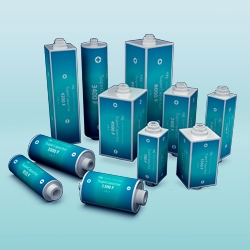Jan 29 2011
Skeleton Technologies, an energy-storage start-up located in Tartu, Estonia, receives a US patent for breakthrough supercapacitor material.
US patent Nº 7,803,345 was granted for the nanoporous carbon powder developed by the researchers at the company.
 Supercapacitor Material
Supercapacitor Material
This newly patented material will solve crucial energy storage problems, from the automotive to the defence and space industries – supercapacitors made from the material have gained the attention of leading multi-technology companies in the fields.
Supercapacitors bridge the gap between batteries, which offer high energy densities but are slow, and conventional electrolytic capacitors, which are fast but have low energy densities. The patented material, in conjunction with a patent-pending supercapacitor technology, will be a problem-solver in the supercapacitors market.
Although the market is growing at a 30% rate, additional growth has been stalled by the lack of high energy and power densities needed by high-performance applications, such as in the defence industry and motorsports. At the same time, high costs have been a restricting factor for price-sensitive markets like the automotive market.
Skeleton Technologies supercapacitors have a twofold advantage: in specialised, high-performance applications, where cost is not a critical driver, we can deliver more power and more energy than our competitors at the same weight and volume. Today, the energy density and maximum power of Skeleton Technologies’ ultracapacitors reach 13 Wh/L and 70 kW/L respectively: roughly a 50% higher energy density and 4× higher power density.
In more mass-market applications where cost is an issue, however, our technology permits us to deliver the same performance as our competition, but at a lower price and in a smaller, more compact form-factor. Today, the price of quality carbon is USD 20/kg; the target price for a superior performance carbide-derived carbon is USD 10/kg.
The competitive edge is derived from the material, which possesses very high surface area and a high packing of nanopores. The material enables the modification of the porosity and pore-size structure of carbon particles in such a way that the surface of the carbon particles contains larger pores than inside the particles. This allows increased access to nanopores by the liquids and, in turn, raises the energy density. Low internal resistance of the nanostructured material raises the power density.
The patented material has also shown superior characteristics in molecular sieving, hydrogen storage and in electroactive devices and actuators.
As carbide-derived carbons are becoming increasingly acknowledged as the best supercapacitor material, the US patent (and soon-to-be-granted EU patent) gives them an exclusive protection for the carbide-derived carbons most suitable for energy storage applications.
The first industry trials for the supercapacitors have been carried out successfully, and Skeleton Technologies plans to enter the market with substantial production capability by 2013.
Source: http://www.skeletontech.com/